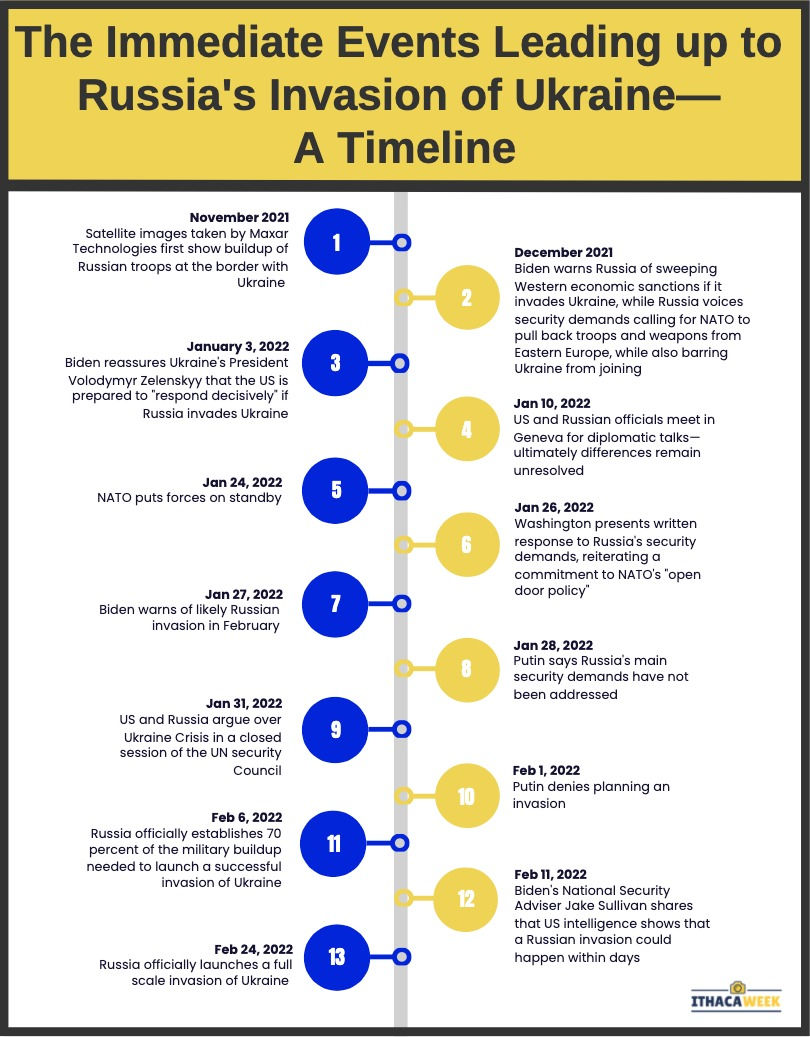Ukraine in Turmoil: The Latest on What this Means for Refugees
- Maia Noah

- Mar 4, 2022
- 5 min read
Key Takeaways:
More than 1 million refugees have officially fled Ukraine, that number is predicted to reach between 4 and 5 million refugees
On March 3, the Biden Administration announced it will offer humanitarian aid to those Ukrainians living in the United States since March 1 or earlier
Canada announced their own plan of action in response to Ukraine's refugee crisis
The EU agreed to grant refugees temporary residency, including protections and rights, for up to three years
Women and children fleeing war-torn Ukraine wait to cross
into Poland
On February 24, Putin officially launched a full scale invasion of Ukraine, rolling in Russian tanks and armored vehicles on three fronts, making a significant escalation in a conflict that actually began back in 2014. By day two of the invasion, Russian forces began their advance on Kyiv, Ukraine's capital, despite a growing global opposition.
In just one week since the invasion commenced, the United Nations Human Rights Monitoring Mission in Ukraine reported 752 civilian casualties in Ukraine. Other numbers indicate that more than 2,000 Ukrainian civilians have thus been killed. Amid the violence, on that same day, the UN High Commissioner for Refugees, Filippo Grandi stated in a tweet that one million refugees have officially fled Ukraine.
With these statistics in mind, the UN refugee Agency (UNHCR) said Tuesday that the situation in Ukraine could become "Europe's largest refugee crisis this century." The UNHCR is also now predicting that these numbers of refugees fleeing Ukraine could reach up to between 4 and 5 million people. Standing at over one million refugees so far, this exodus of people, in many cases parting with their homes, families, careers or educations, is among the largest outpouring of refugees in Europe’s borders in recent decades.
How Different Countries are Responding to Ukraine's Refugee Crisis
Now, the question many Americans may have is whether or not the United States will be welcoming of people from Ukraine who are now seeking a place of refuge. In the White House press briefing on February 28, four days into Russia’s invasion, Press Secretary Jen Psaki updated Americans saying that there are currently no updates regarding Temporary Protected Status for Ukrainians in the U.S.. Psaki reiterated that Temporary Protected Status is an interagency process. This update came after one person asked for a timeline on whether or not the administration would move to give refugees from Ukraine protective status.
Despite the U.S. having no updates regarding welcoming refugees from Ukraine at that point, on March 3, the Biden administration announced that it will offer humanitarian relief to those Ukranians who have been living in the United States without legal documentation since March 1 or earlier. Temporary protected status, in this case, will not apply to any Ukrainians who entered the United States after May 1.
On March 3, Biden also announced that his administration would be revising the United States' annual refugee admissions cap to 62,500 for the fiscal year. This alters the previous cap set forth by the Trump administration of admitting just 15,000 refugees per year. This shift was enacted to better reflect America's values as a nation that is welcoming and supportive of refugees.
Also on March 3, Canada announced their own plan of action to provide support for those fleeing Ukraine. In a news release from Immigration, Refugees and Citizenship Canada (IRCC) it was stated that, "As part of the Government of Canada’s response to Russia’s full-scale invasion of Ukraine, Immigration, Refugees and Citizenship Canada (IRCC) is introducing new immigration streams for Ukrainians who want to come to Canada temporarily or permanently." For those Ukrainians that want to go to Canada temporarily, a Canada-Ukraine Authorization for Emergency Travel will be created. IRCC said there is no limit on the number of refugees who can apply. IRCC also shared in this release that all Ukrainian nationals will be able to apply through this new path, and, pending background check and security screening, their stay in Canada could be extended to at least 2 years.
On the other hand, the European Union (EU) has already begun accepting refugees.
According to the UN, as of March 1, more than half of refugees — nearly 548,000 — have fled to Poland (Poland shares a border with Ukraine that is over 300 miles). Refugees have also gone to other neighboring countries/countries in the EU:
Hungary: 133,000 refugees
Slovakia: 72,000 refugees
Romania: 51,260 refugees
Moldova: nearly 98,000 refugees (Moldova is not a part of the EU and also Europe’s poorest country)
A woman hugs a girl as refugees from Ukraine wait for a transport at the Moldova-Ukrainian border's checkpoint
On March 3, European Union interior ministers also unanimously voted on a plan to grant temporary residency, including protections and rights to Ukrainians fleeing the war-torn country. This protection under the EU's agreement would last up to three years for these refugees. The agreement on this plan also marks a historic deal as this is the first time the 20-year-old power designed to help shelter refugees has been called on.
Meanwhile, also on March 3, just eight days into the war and amid a growing refugee crisis, Putin claimed that during talks with Ukraine, the Russian military has offered safe corridors, allowing civilians in Ukraine to escape the war. While making this claim, Putin also outwardly blamed Ukraine for its plight. According to the AP, the establishment of safe corridors was Ukraine's primary demand as they headed into a second round of talks with Belarus. Following these talks, Ukraine’s presidential adviser Mykhialo Podolyak said that Russia and Ukraine will quickly establish the channels of communications and logistics that are critical to ultimately organize these safe corridors.
The Events Leading up to Russia's Invasion
The escalation of this conflict can be immediately rooted back to as early as this past November when satellite imagery first began to show the buildup of Russian troops on the border with Ukraine. At the time, Kyiv, Ukraine’s capital, began to voice that Moscow had already mobilized 100,000 soldiers, along with tanks and other military hardware.
Concerns among Western and Ukraine officials grew rapidly over the Kremlin potentially preparing for significant military action, and even maybe an invasion.
In December, US President Joe Biden warned Russian President Vladimir Putin of sweeping economic sanctions if he did in fact decide to invade Ukraine. By January, Biden reassured Ukraine’s President Volodymyr Zelenskyy that the US is prepared to “respond decisively” if Russia invades Ukraine.
Also in January, the US met with Russia in Geneva for diplomatic talks. Despite these talks, by February 6, Russia had officially established 70 percent of the military buildup necessary to launch a full-scale invasion of Ukraine. Just over two weeks later, Russia took its next step and invaded Ukraine.

The situation in Ukraine is rapidly evolving, with more and more refugees fleeing the country every day. No cease-fire is currently in sight.





Comments